MaDePro India
For the third time I accompanied an EPFL (Ecole Polytechnique Fédéral de
Lausanne) course to India. The Certificate of Advanced Studies in Management
of Development Projects (MaDePro) brought together 24 participants from
almost as many countries: Bangladesh, Brazil, Cameroon, Canada, Colombia,
Costa Rica, Ethiopia, Haiti, Germany, Guatemala, Guinea Bissau, India,
Israel, Kyrgyz Republic, Mexico, Nepal, Netherlands, Spain, and Switzerland.
After 6 months of distance learning, including my two-week module on
sustainable development, we gathered at the National Institute of
Advanced Studies in Bangalore, Karnataka State, India, for an introduction
to Indian culture and cross-cultural communication. We then went for a week
to the remote village of Channakeshavapura (CK Pura for short, 330
households), four hours from Bangalore, to live in the village as guests of
Sheshagiri Rao and his family. Sheshagiri is both a decendent of the founder
of the village 150 years ago, and an environmental scientist who went back
to his village to help his people. The participants in four groups
researched and prepared useful development project proposals on the impact
of migration on the village, sustainable use of groundwater, microcredit,
and the introduction of information technology into the local schools. This
was my third visit to the village (see 2010
and 2012) and we learned that two
projects from the last course had had a significant impact.
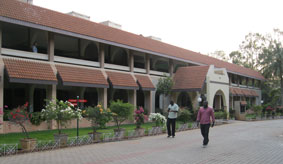 .
. 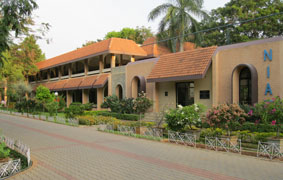
National Institute of Advanced Studies in Bangalore, where we stayed
before and after CK Pura
We happened to arrive in Bangalore on the Hindu festival of holi when they
throw coloured powders on everyone. Our participants began their immersion
in a culturally-appropriate way.
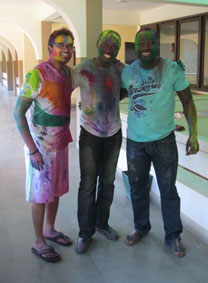 .
. 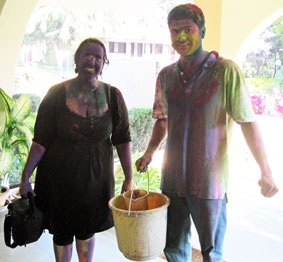
Participants after holi
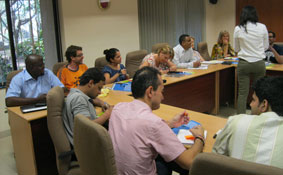 .
. 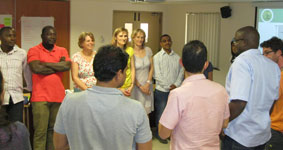
Class in cross-cultural communication
As part of a day on urban development challenges, we made a field visit to
urban waste recycling schemes in Bangalore run by an association of former
rag-pickers. Instead of going through refuse dumps and roadside scrounging,
they have contracts with housing complexes and the municipality to collect
and sort waste for recycling in economically stable and sanitary conditions.
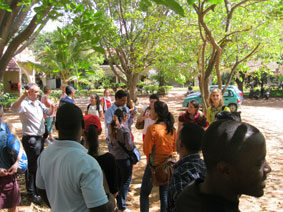 .
. 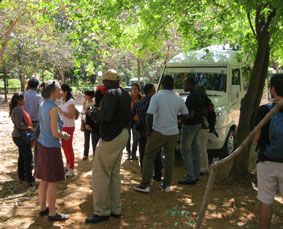 .
. 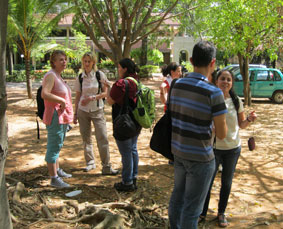
Preparing to leave NIAS for the field visit
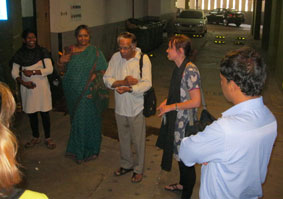 .
. 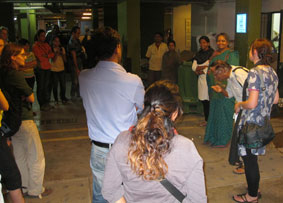 .
. 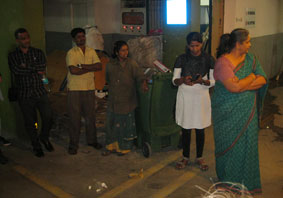
A housing complex of 1,000 apartments where the tenants association
and the rag-pickers association collaborate to collect, sort and recycle
the wastes from the building
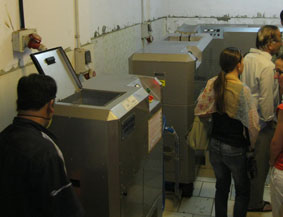 .
. 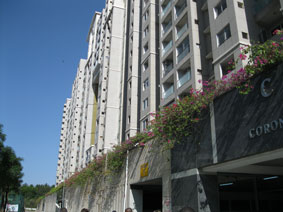 .
. 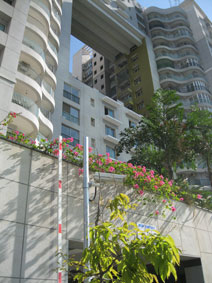
Modern composting machines; the housing complex
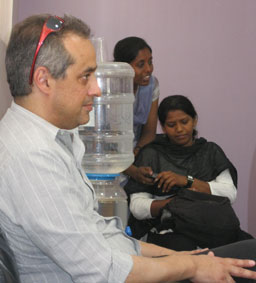 ,
, 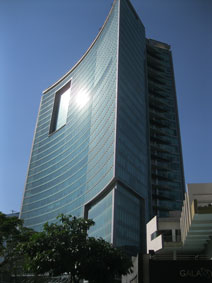
Yuri Changkakoti, the course coordinator from EPFL, and former
rag-pickers; a nearby building in Bangalore
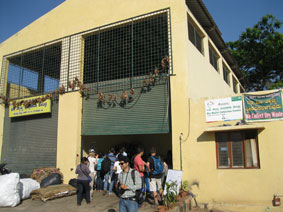 .
. 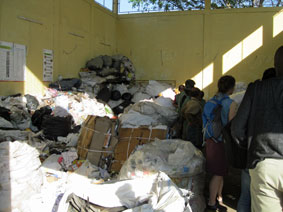 .
. 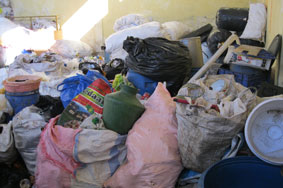
A municipal district dry waste collection centre run by the
rag-pickers under contract
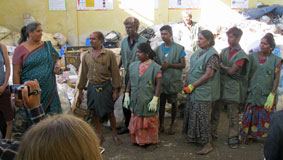 .
. 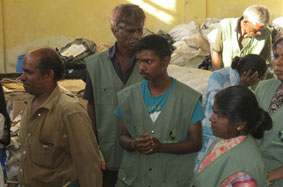
The association organizer, the manager of the centre and his team of
former rag-pickers in their uniforms and gloves
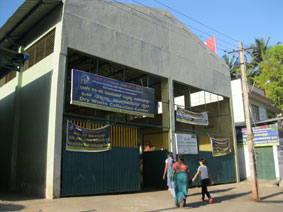 .
. 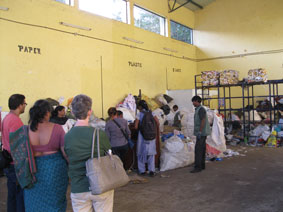 .
. 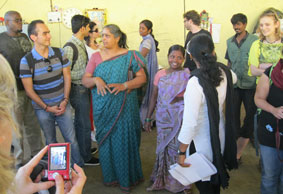
A second district dry-waste collection centre; participants with the
association organizer, the director of the centre (in violet), a former
rag-picker on the streets
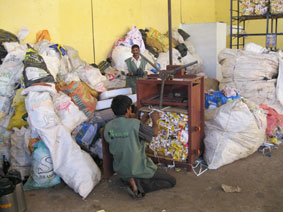 .
. 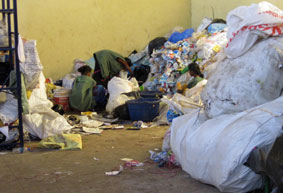 .
.
An experimental machine for compacting packaging; employees sorting
wastes
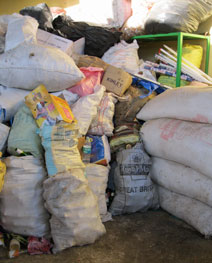 .
. 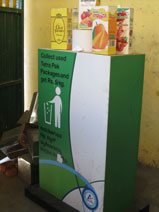
Unsorted wastes; a experiment in recyling Tetra Pak packaging
On the way to the village of CK Pura,
we stopped at a natural medicines company farm that Sheshagiri has been
advising on sustainable agricultural practices in this semi-arid region. The
agroforestry approach combines trees for water retension, bunds to slow
run-off, composting to improve the soil, and holding ponds and borehole
recharge at the bottom of the slope.
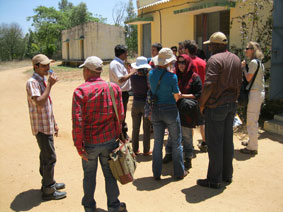 .
. 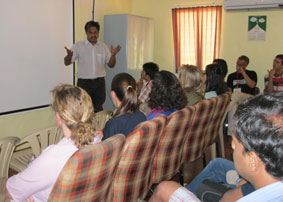
At the company farm headquarters; initial explanation by Sheshagiri
Rao
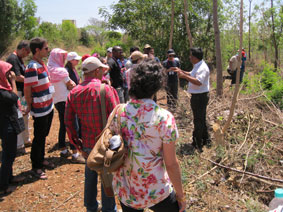 .
. 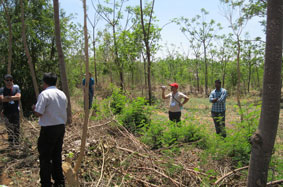 .
. 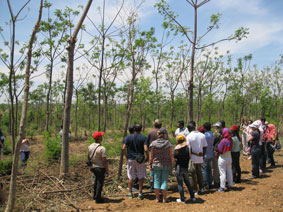
The land has been contoured to slow run-off, with rows of trees,
bunds and pits to catch rainwater
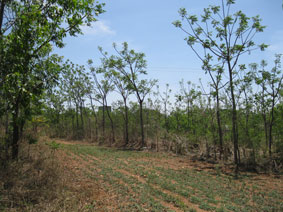 .
. 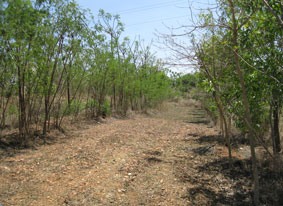 .
. 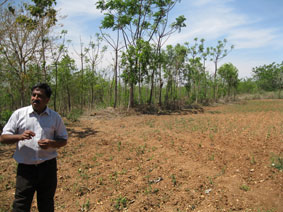
Medicinal herbs are grown between the rows of trees, wider or
narrower depending on the soil and water
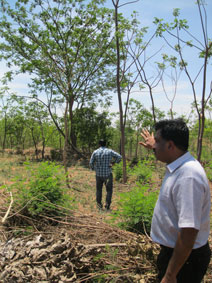 .
. 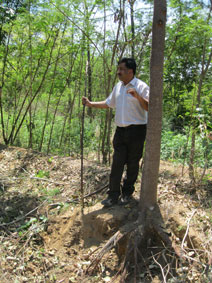 .
. 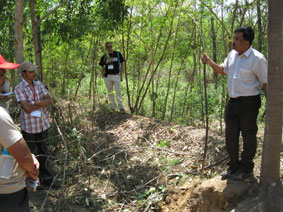
High-value trees with deep roots are combined with fast-growing trees
that can be cut back to save water in droughts
C.K. Pura
The village of Channakeshavapura is in a semi-arid region where groundnuts
(peanuts) have been the traditional cash crop, but rainfed agriculture is
risky, and the last three years have seen rainfall far below average. Water
from traditional wells and boreholes allows cultivation to continue for
those who can afford it, when the unreliable electricity permits. Women
supplement the family income by processing tamarind or rolling cigarettes.
There are some sheep and cows. There are both Hindus and Moslems, and some
low caste tribal shepherds nearby. Life is difficult. In most families,
someone has migrated to the town or city.
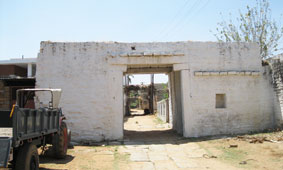 .
. 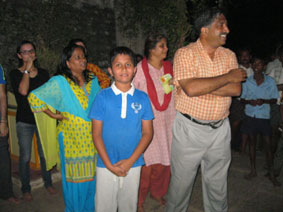
The gate in the former village fortifications; our hosts Sheshagiri
Rao and his wife, son and sister
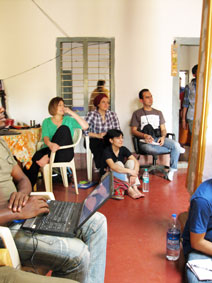 .
. 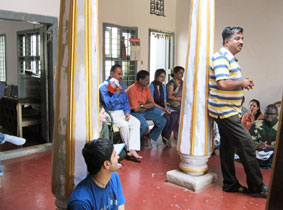 .
. 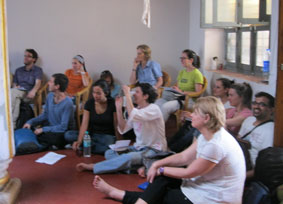
Dr. Rao gives an initial briefing to participants in his home
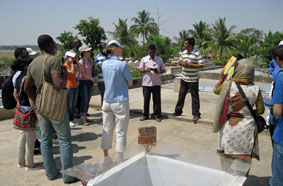 .
. 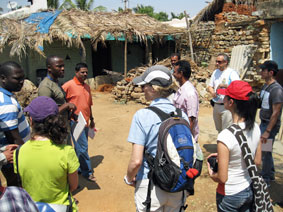 .
. 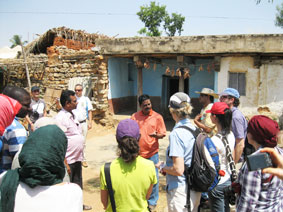
An initial tour of the village shows the reality of village life
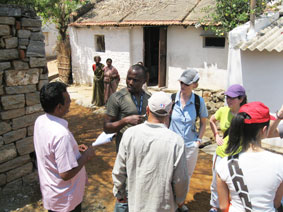 .
. 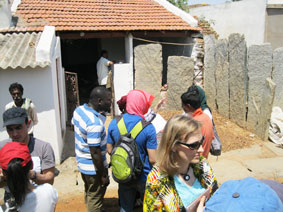 .
. 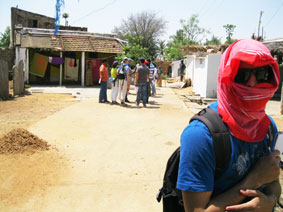
Local resource people provide information and answer questions; our
Nepalese participant covers up in the sun
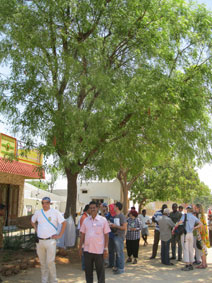 .
. 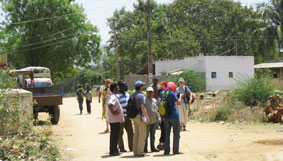 .
.
Neem trees provide some shade
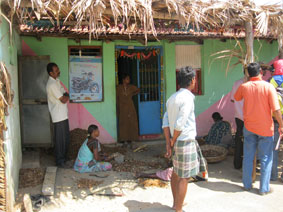 .
. 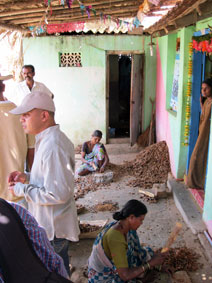 .
. 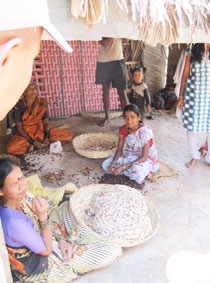
Women processing tamarind and oil nuts
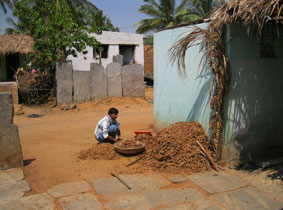 .
. 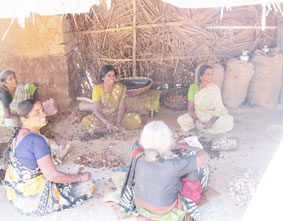 .
. 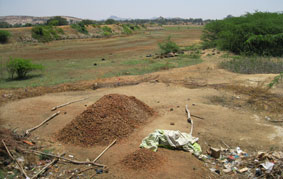
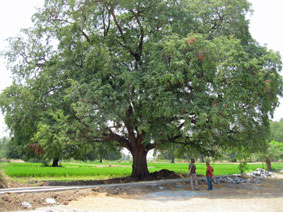 .
. 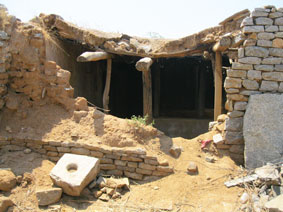 .
. 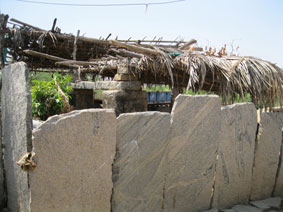
A large tamarind tree; an abandoned house; stone fencing
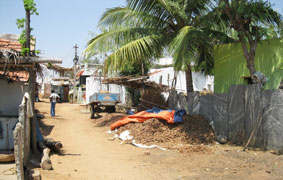 .
. 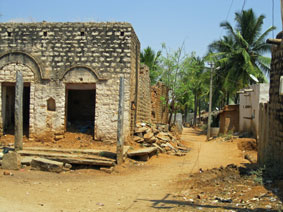 .
. 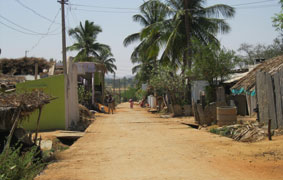
Village streets
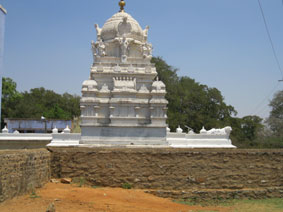 .
. 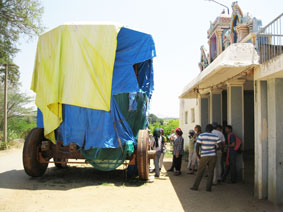 .
. 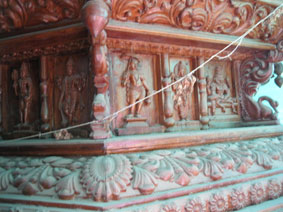
The village Hindu temple; a giant cart for the recently-completed
procession with the village goddess, held every 24 years
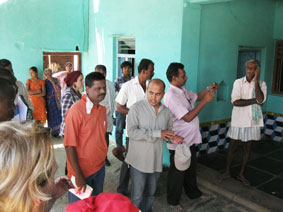 .
. 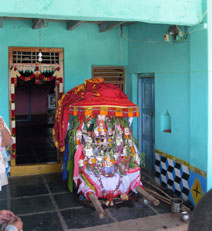
The goddess is still being moved from house to house
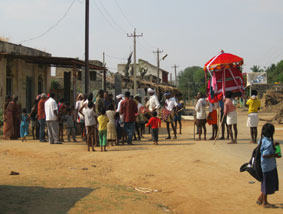 .
. 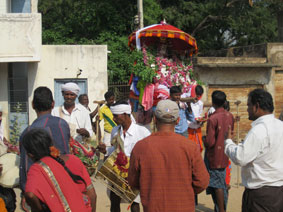 .
. 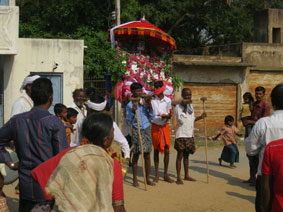
Procession with drums and the goddess
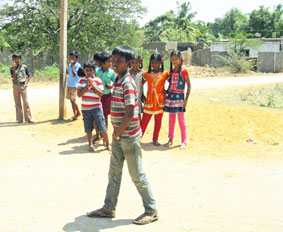 .
. 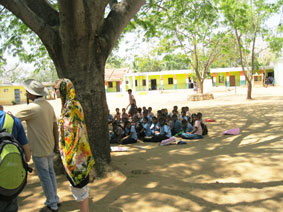 .
. 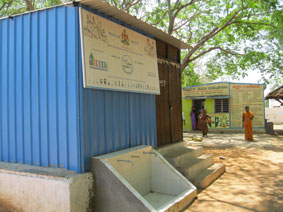
School children; a class under a tree in the school yard; the new
village water purification plant
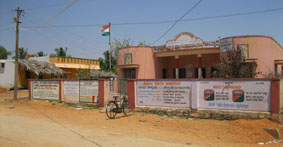 .
. 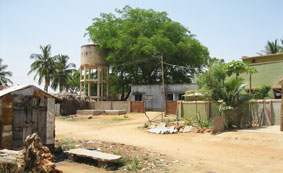 .
. 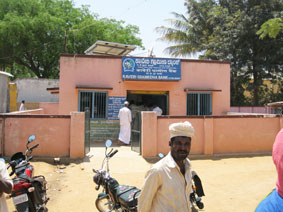
The municipal government building; water tank; microcredit bank
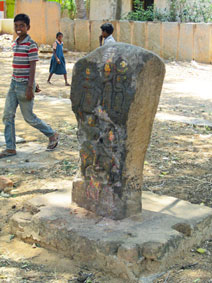 .
. 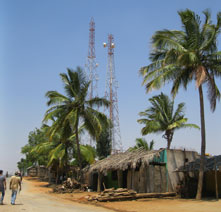 .
. 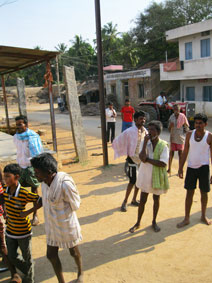
A memorial to those who defended the village; cellphone towers;
villagers come to see us off
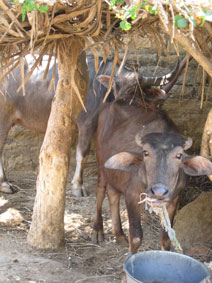 .
. 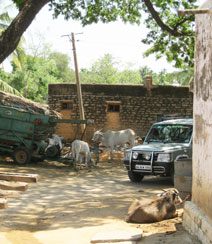 .
. 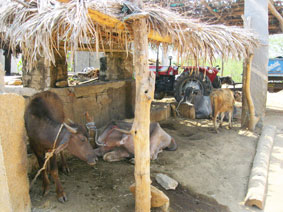
Village livestock; old and new forms of transport
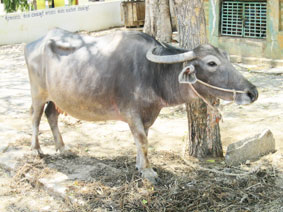 .
. 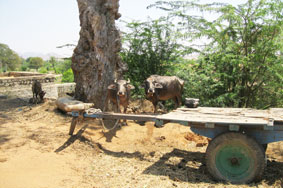 .
. 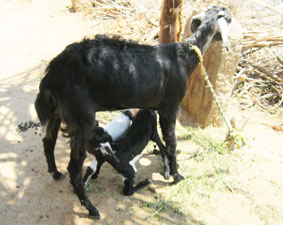
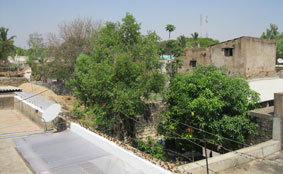 .
. 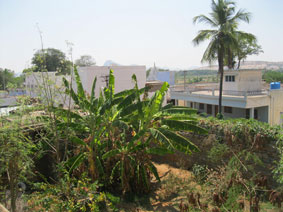 .
. 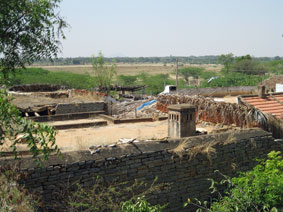
Views of the village from the roof of Sheshagiri's house
The class was divided into four groups, each preparing a specific
development project: problems of groundwater management; evaluation of
microcredit schemes; introduction of information technology into the
schools; and the impacts of rural-urban migration on the village. The groups
visited the village and surroundings to collect background on their problems
and to interview people concerned, accompanied by a local resource person
and translator. They then had to come up with proposed solutions that could
be implemented to solve the problem.
We learned that two of the projects from the last class two years ago had
led to significant progress. A proposal to develop televeterinary medicine
for illiterate shepherds was about to be implemented after leading to a
similar cellphone application for farmers. Another project that had assessed
the problems with pump maintenance had stimulated the federal government to
select the district for a pilot project to replace all the pumps with new
robust energy-efficient pumps. This encouraged the participants to think
that their proposals could well lead to practical results.
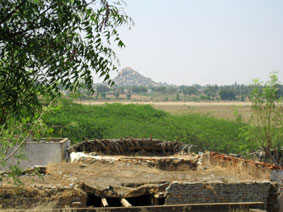 .
. 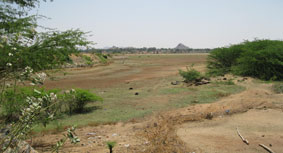 .
. 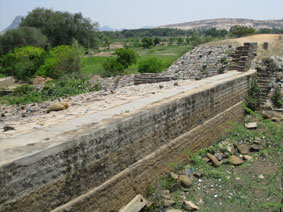
The village is next to a large tank (reservoir) that catches
rainwater, but empties in the dry season
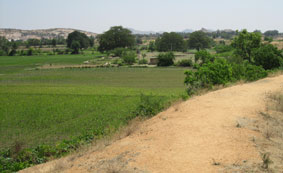 .
. 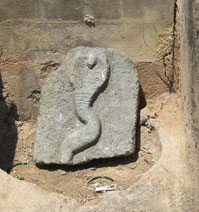 .
. 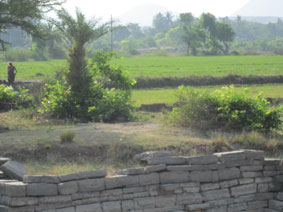
Below the tank, fields are irrigated from wells and boreholes; there
are sacred symbols at the spillway and next to wells
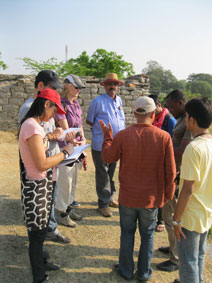 .
. 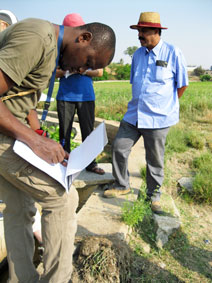 .
. 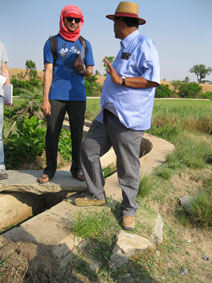
The groundwater project group visits wells and boreholes with a
hydrologist
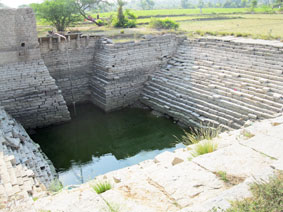 .
. 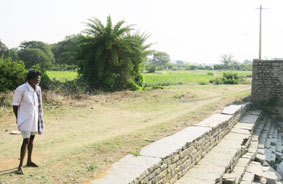 .
. 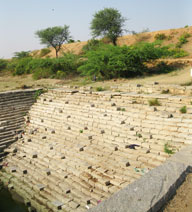
The wells are deep and hundreds of years old
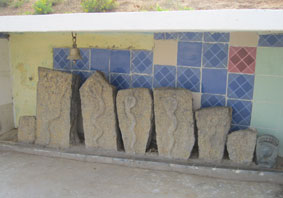 .
. 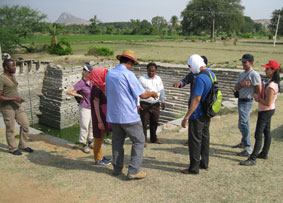
Sacred symbols by the well; learning water divining
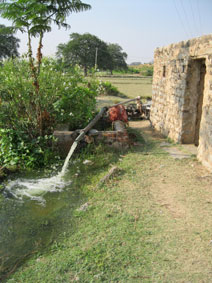 .
. 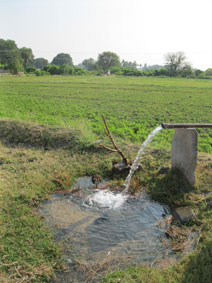 .
. 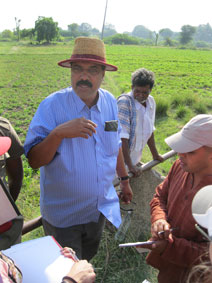
When the electricity is on, farmers irrigate their fields
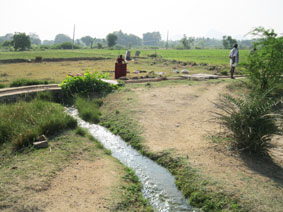 .
. 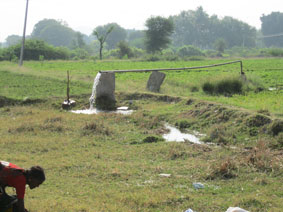 .
. 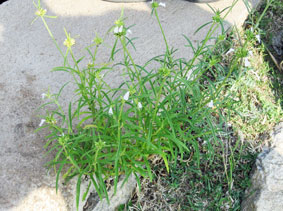
This is also the time to do the laundry; a plant indicator of water
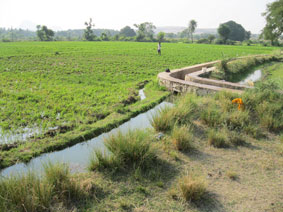 .
. 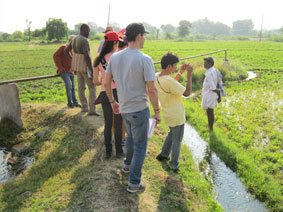 .
. 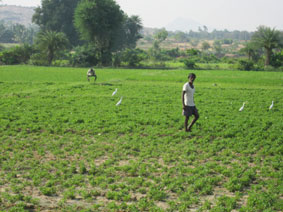
Channels bring the water alongside the fields
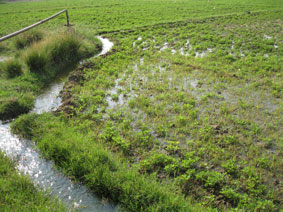 .
. 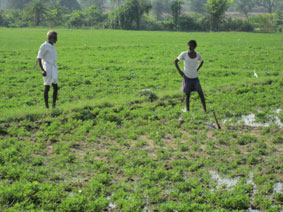 .
. 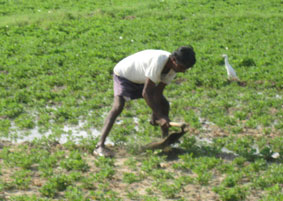
The farmers open and close breaks in the channels to bring the water
to their crops
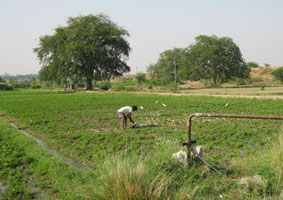 .
. 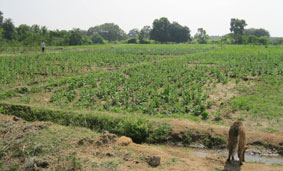 .
. 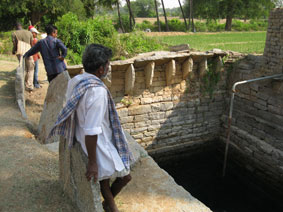
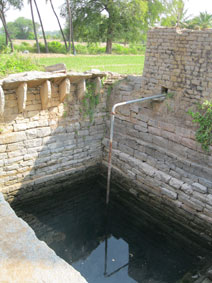 .
. 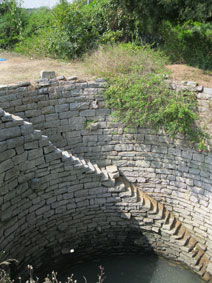 .
. 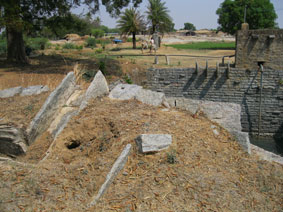 .
.
Before there were pumps, water was raised in bullock skins pulled up
by animals, and directed to the fields in stone-lined channels
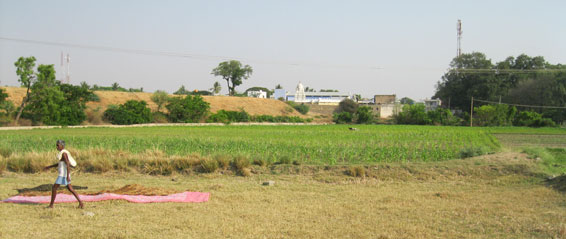 .
. 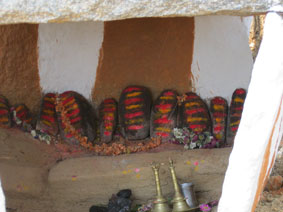
Cloth drying in the sun; sacred objects by a well
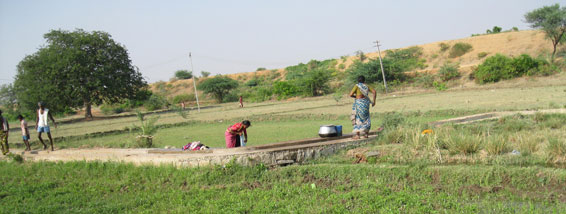
Washing clothing
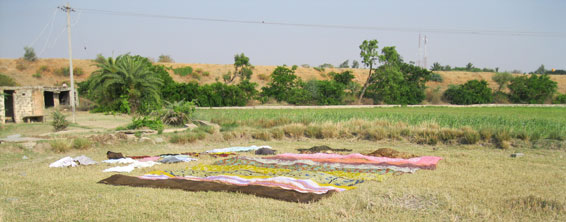
Laundry drying
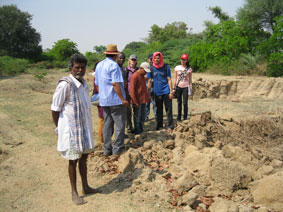 .
. 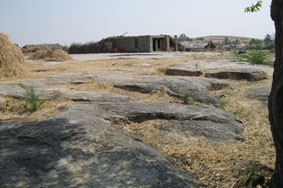 .
. 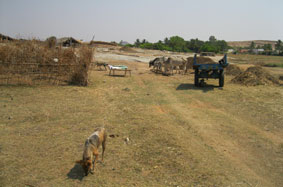
Farmers dig up topsoil in the stream beds; shepherds store their hay
on rocky outcrops, and use thorn bushes for fences
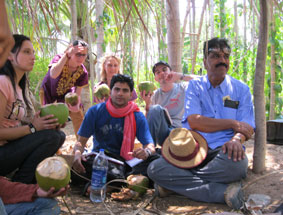 .
. 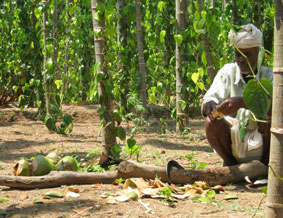 .
. 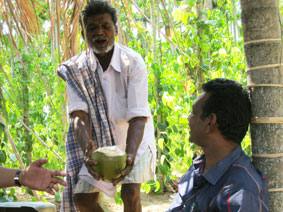
A farmer with a betel nut plantation serves us drinking coconuts
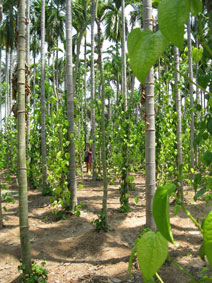 .
. 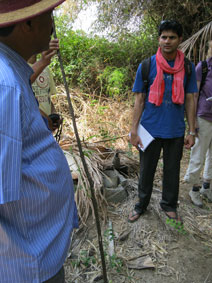 .
. 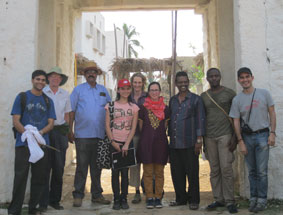
Betel nut palms; one of three failed bore wells; the groundwater
group at the village gate (I am second from left)
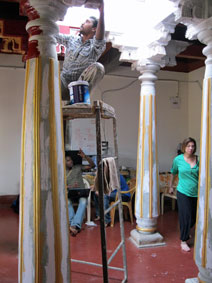 .
. 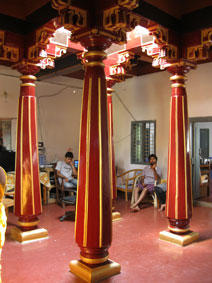 .
. 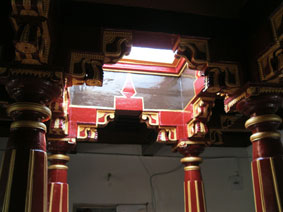
The ancient columns in Sheshagiri's house were painted in traditional
colours while we were there
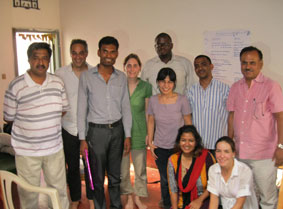 .
. 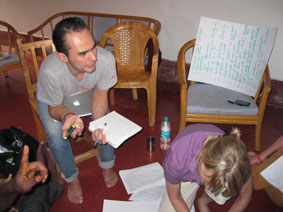 .
. 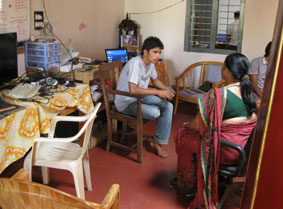
The microcredit group; groups at work
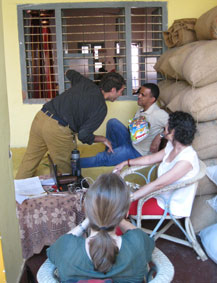 .
. 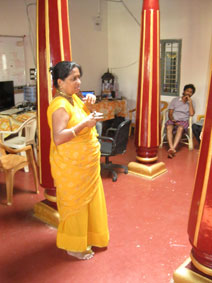 .
. 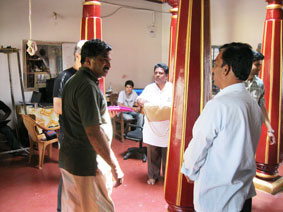
Intense discussions; Sheshagiri's sister and other resource persons
helped the groups
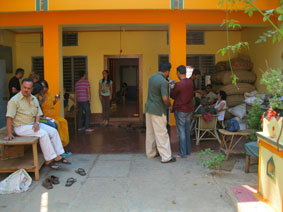 .
. 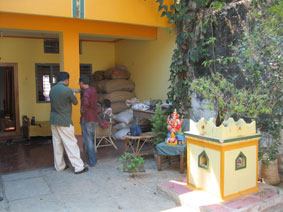 .
. 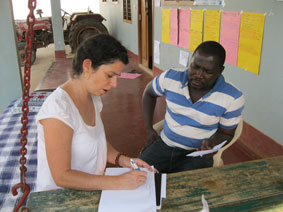
Courtyard in front of Sheshagiri's house; participants at work
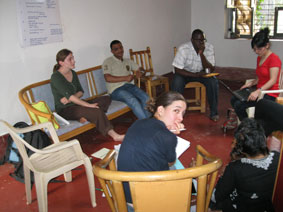 .
. 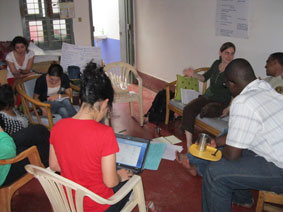 .
. 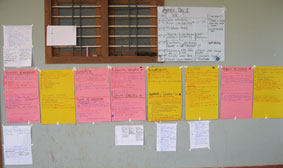
Groups at work; the migration group filled a whole wall with notes
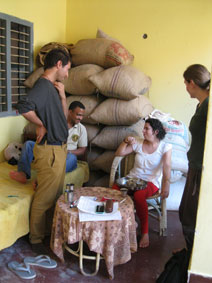 .
. 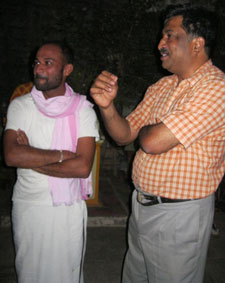 .
. 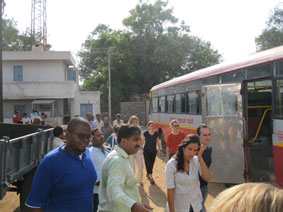
Discussions; Bindu, a neighbour and resource person with Sheshagiri;
loading the bus for the return trip
Timapamabeta Hill
Early one morning we hiked up one of the granite hills near CK Pura to get a
better view of the countryside. We could not go to the top as there are
bears living there, and we saw recent droppings.

Views from the hill

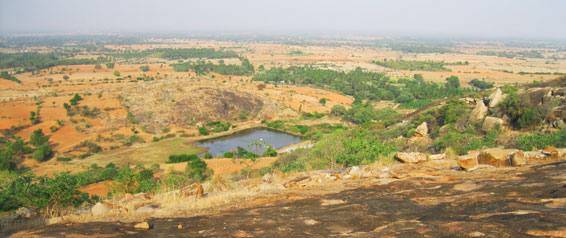
A low-lying reservoir
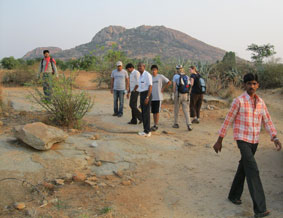 .
. 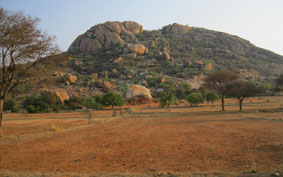 .
. 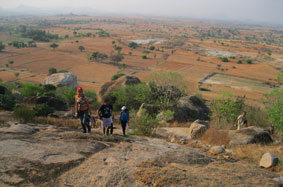
At the start of the hike; the hill we climbed; on the way up
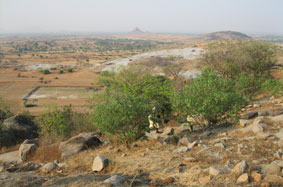 .
. 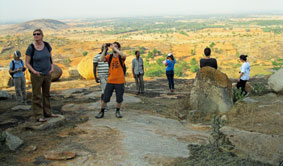 .
. 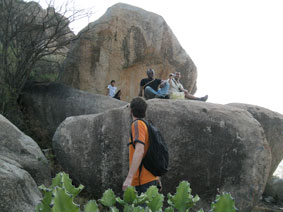
A pause to enjoy the view
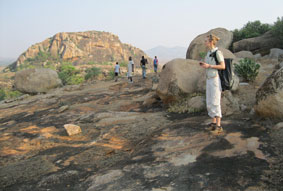 .
. 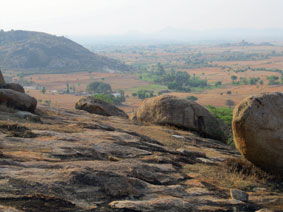 .
. 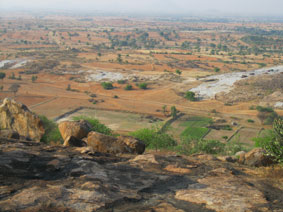
The hill is mostly bare granite with large boulders; shepherds burn
off the vegetation to encourage grass
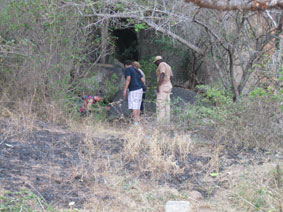 .
. 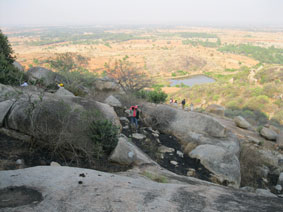 .
. 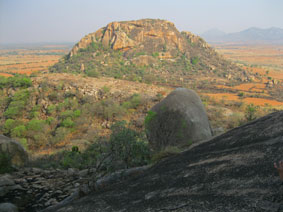
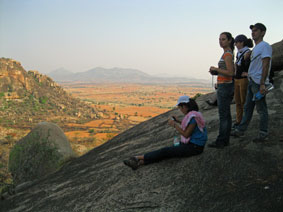 .
. 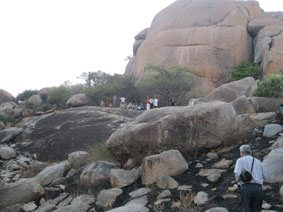 .
. 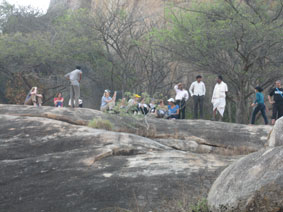
The view in the morning sun was beautiful
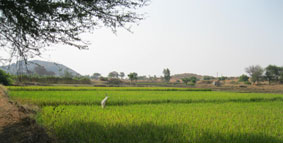 .
. 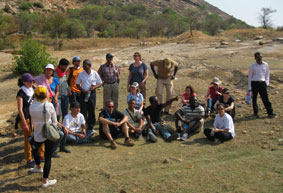 .
. 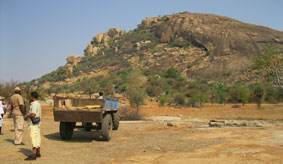
Rice cultivation with the water from the reservoir; the group of
hikers; a tractor trailer provided transport from and to the village
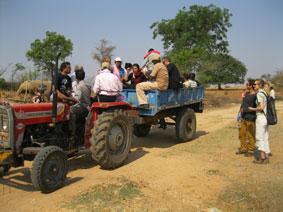
One night, some drummers from the
village came, and the dancing attracted quite a crowd, including even more
drummers
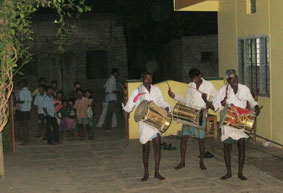 .
. 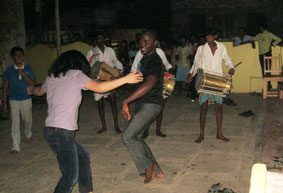 .
. 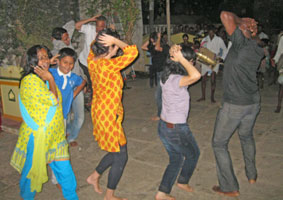
The village drummers; participants dancing
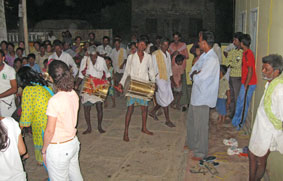 .
. 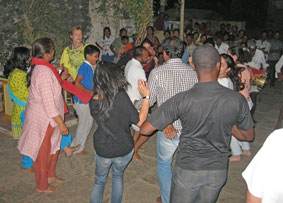 .
. 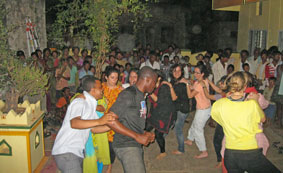
A large crowd gathered outside the house to watch
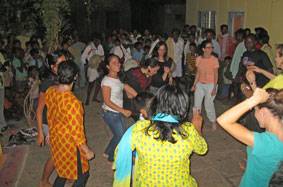 .
. 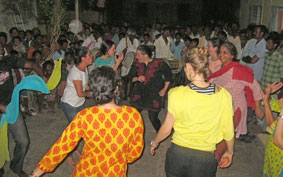 .
. 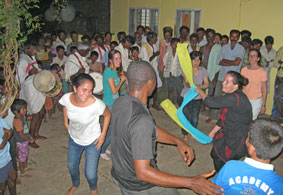
There were many styles of dancing
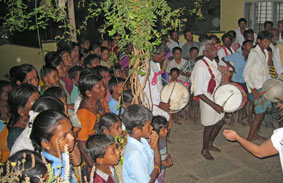 .
. 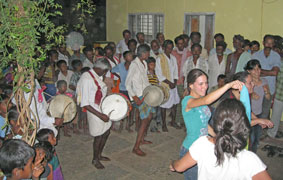 .
. 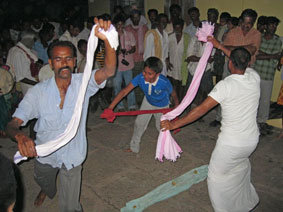
There was even a local demonstration of a scarf dance
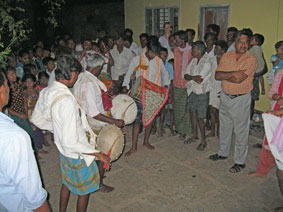 .
. 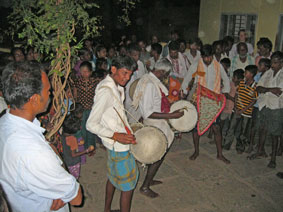 .
. 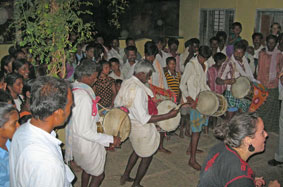
The music went on for a long time
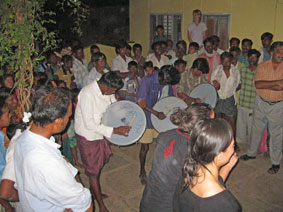 .
. 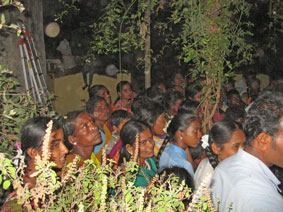 .
. 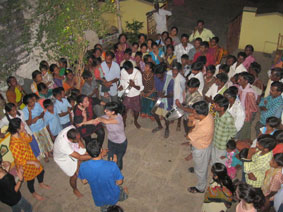
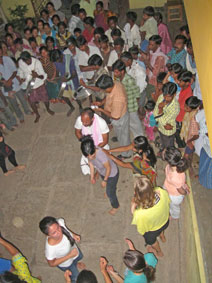 .
. 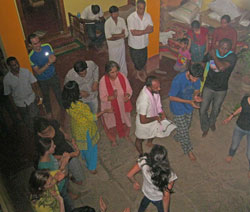 .
. 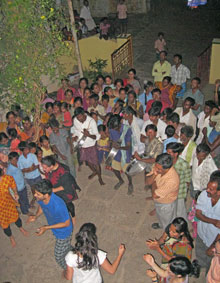
Everyone had a good time
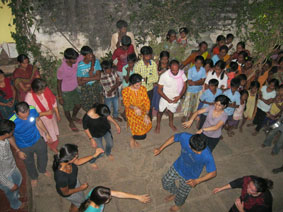
After the dancing, the ladies of the house brought out some elegant saris,
and the female participants became Indian beauties.
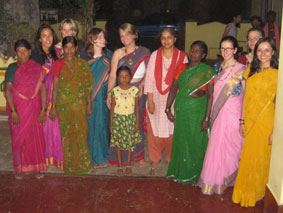 .
. 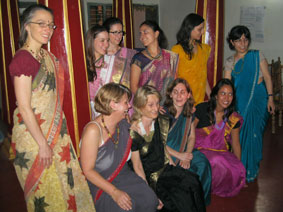 .
. 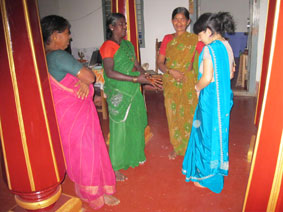
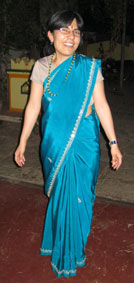 .
. 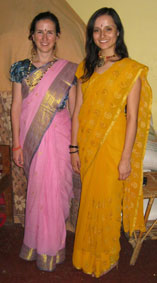 .
. 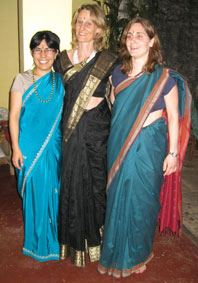 .
. 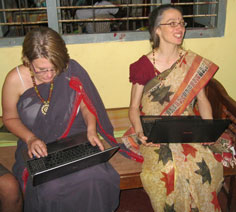
but that did not stop them from working
Lepakshi Temple
On the way back from CK Pura, we stopped at the Virabhadra Swamy Temple in
Lepakshi, constructed in 1538, but never finished. The previous MaDePro
class had also visited the temple in 2012.
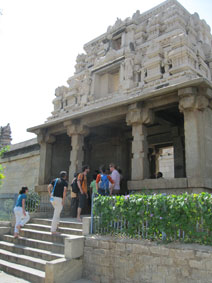 .
. 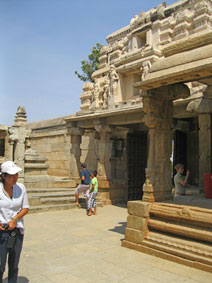 .
. 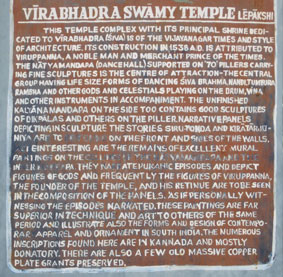
Temple entrance
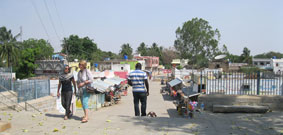
View towards Lepakshi from temple entrance
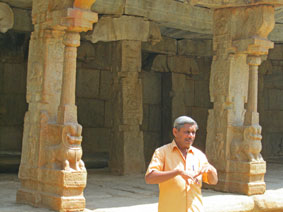 .
. 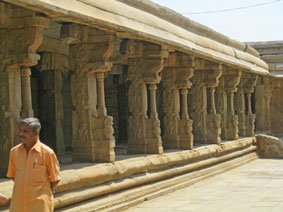 .
. 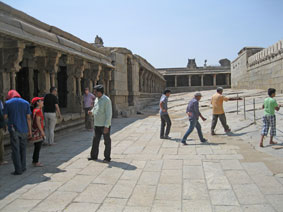
The guide explains the outer colonnade where pilgrims used to stay
during their visits
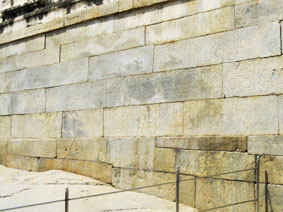 .
. 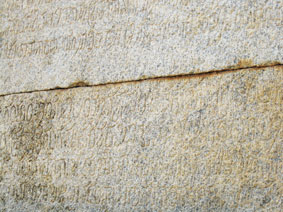 .
. 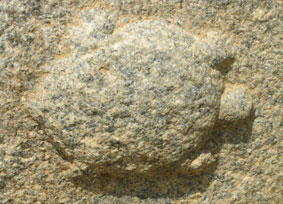
The temple walls are engraved with the full story of the temple gods
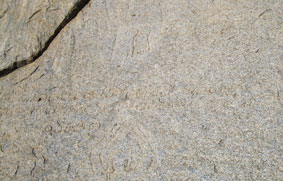 .
. 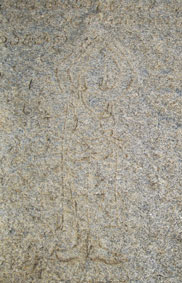 .
. 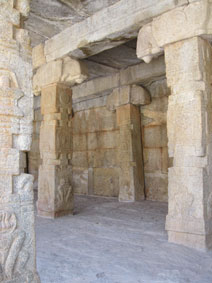
Footprints and an image of the founder of the temple are engraved in
the rock
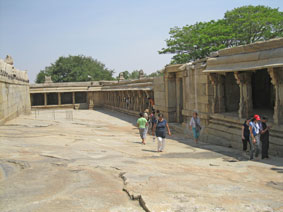 .
. 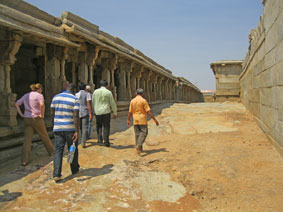 .
. 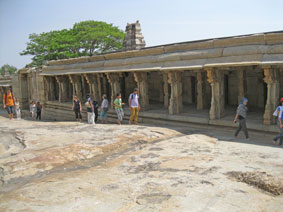
The temple had many concentric circles covering all of Lepakshi, only
a few of which remain
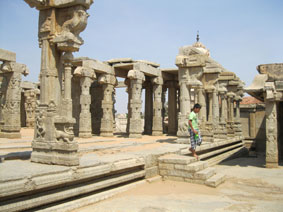 .
. 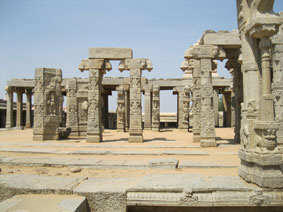 .
. 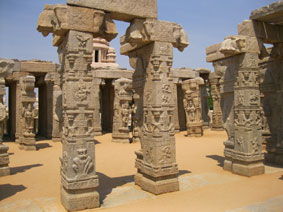
The unfinished part of the temple with gods and godesses on all the
pillars
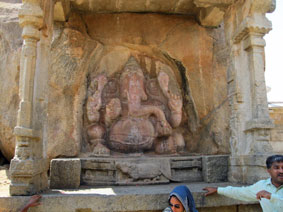 .
. 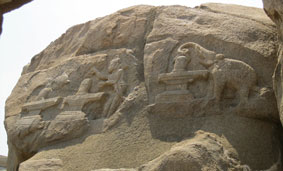 .
. 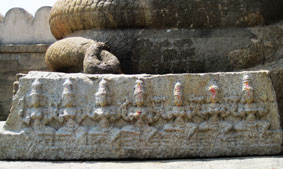
Shiva as an elephant, and its rat transporter; carvings in the temple
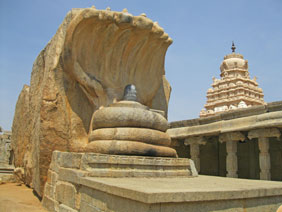 .
. 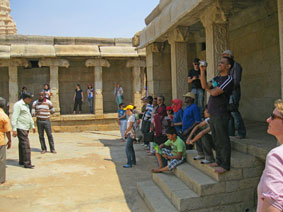 .
. 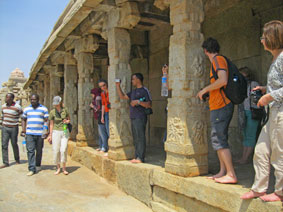
Snakes protecting a sacred stone
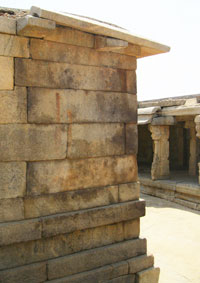 .
. 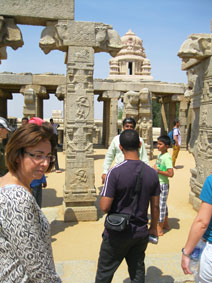 .
. 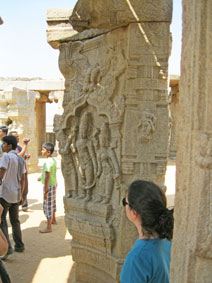 .
. 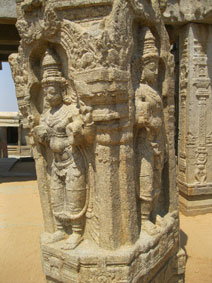
Wall marked by the plucked-out eyes of the temple architect;
participants admiring the sculptures
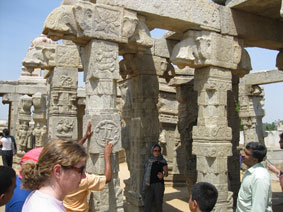 .
. 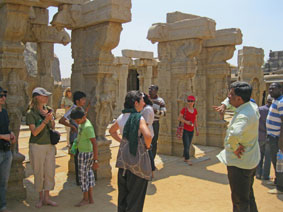 .
. 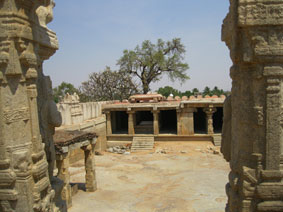
Temple left unfinished when work stopped after the architect was
unjustly punished
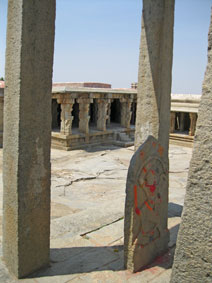 .
. 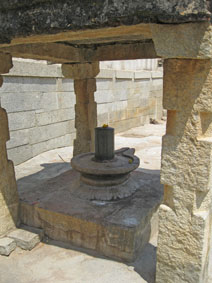 .
. 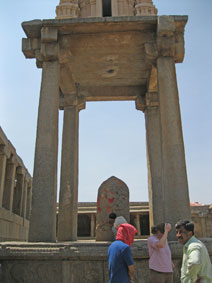 .
. 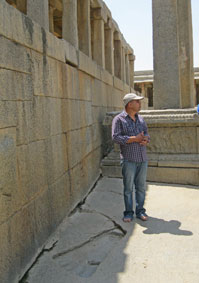
Places to worship; a giant footprint of a god
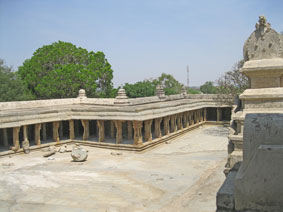
Lower part of the temple
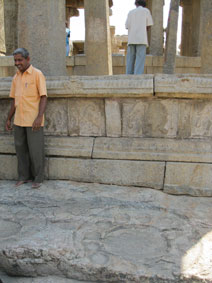 .
. 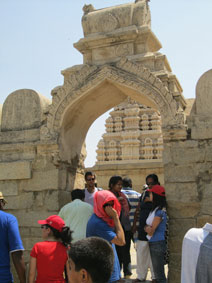 .
. 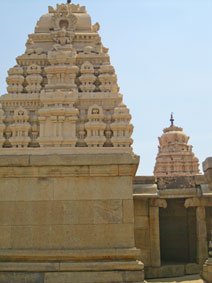 .
.
Plates in the stone where the carvers ate; different parts of the
temple
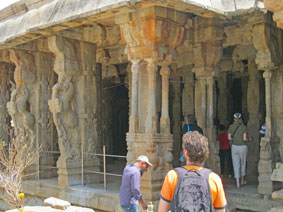 .
. 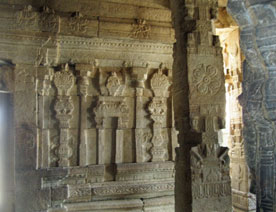 .
. 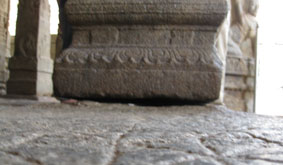
Entrance to the dance hall before the inner temple; a suspended
column in the dance hall does not touch the ground
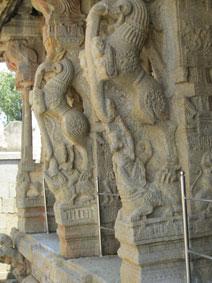 .
. 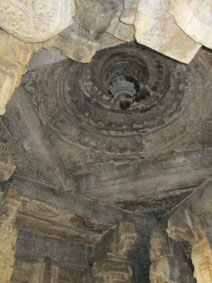 .
. 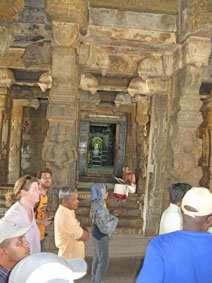
Entrance to the dance hall; dome over the centre; entrance to the
inner temple from the dance hall
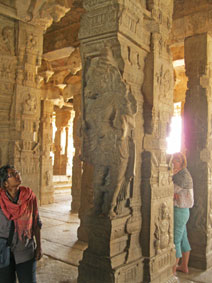 .
. 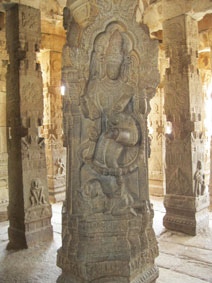 .
. 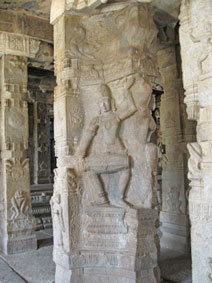 .
. 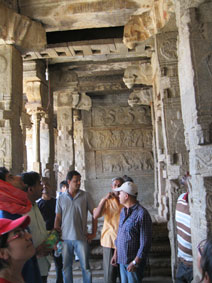
Sculptures of dancers and musicians in the dance hall
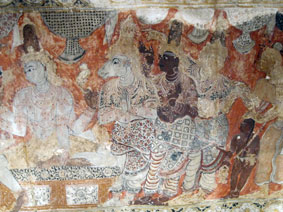 .
. 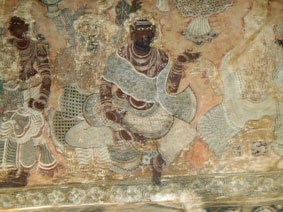 .
. 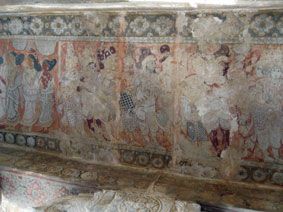
Paintings on the ceiling of the dance hall
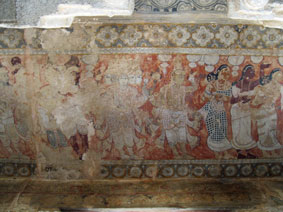 .
. 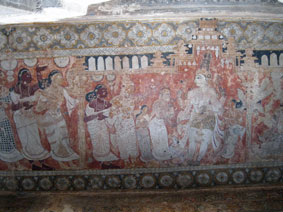 .
. 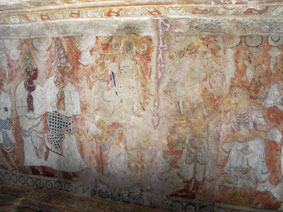
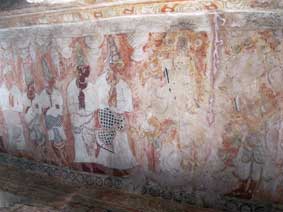 .
. 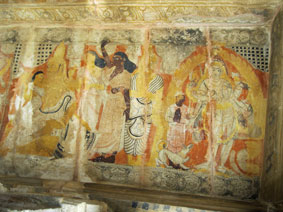 .
. 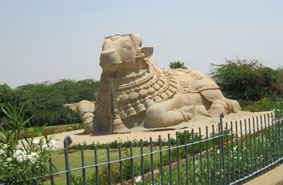
Paintings on the dance hall ceiling; giant bull at the entrance to
Lepakshi, originally part of the largest temple circle
Return to Bangalore
After our return to Bangalore, the development project groups each presented
their project before a jury of outside experts: the impacts of rural-urban
migration on the village; evaluation of microcredit schemes; introduction of
information technology into the schools; and problems of groundwater
management.
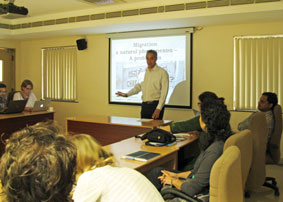 .
. 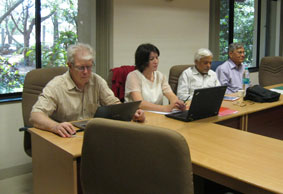 .
. 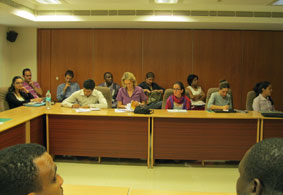
MaDePro coordinator Yuri Changkakoti; the jury of outside experts;
the audience of participants
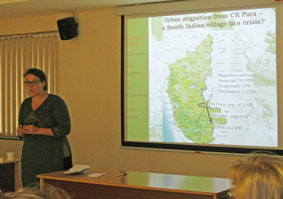 .
. 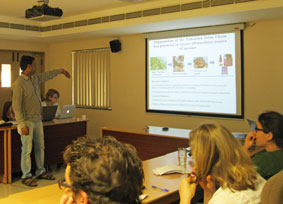 .
. 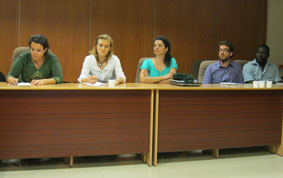
Migration project group
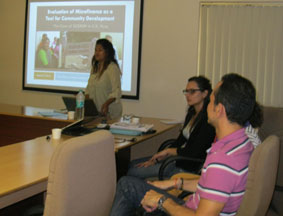 .
.
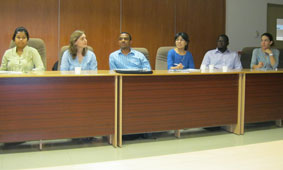
Microcredit project group
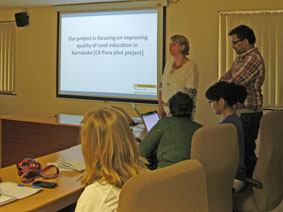 .
. 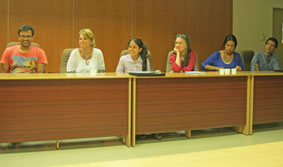
Education project group
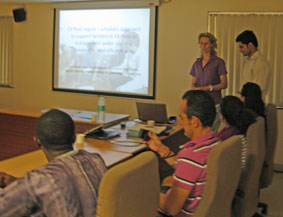 .
. 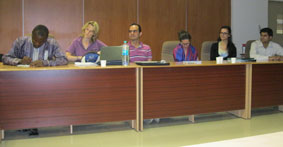
Groundwater project group
The course ended with a dinner reception at Swissnex
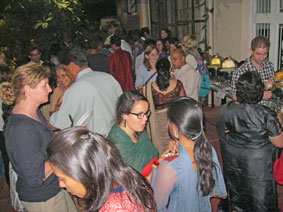 .
. 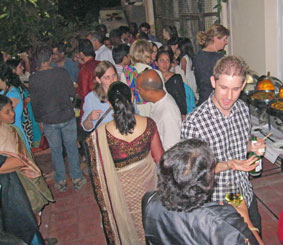 .
. 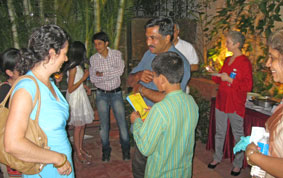
Reception in the garden at Swissnex
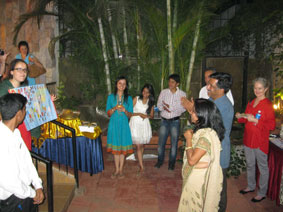 .
. 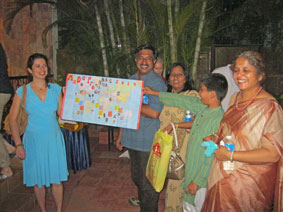 .
. 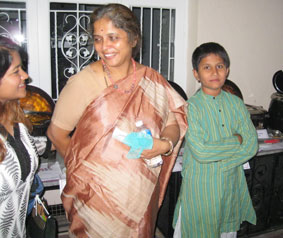
A thank you presentation from the participants to the Rao family for
hosting us so well
 .
. 
 .
. 
 .
. 
 .
.  .
. 
 .
.  .
. 
 .
.  .
. 
 ,
, 
 .
.  .
. 
 .
. 
 .
.  .
. 
 .
.  .
.  .
. 
 .
. 
 .
.  .
. 
 .
.  .
. 
 .
.  .
. 
 .
. 
 .
.  .
. 
 .
.  .
. 
 .
.  .
. 
 .
.  .
.  .
.  .
. 
 .
.  .
. 
 .
.  .
. 
 .
.  .
. 
 .
.  .
. 
 .
. 
 .
.  .
. 
 .
.  .
. 
 .
.  .
. 
 .
.  .
. 
 .
.  .
. 
 .
.  .
. 
 .
.  .
. 
 .
.  .
. 
 .
.  .
. 
 .
.  .
. 
 .
.  .
. 
 .
. 
 .
.  .
. 
 .
.  .
. 
 .
.  .
. 
 .
.  .
. 
 .
.  .
. 
 .
.  .
.  .
.  .
. 


 .
.  .
. 
 .
.  .
. 
 .
.  .
. 
 .
.  .
. 
 .
.  .
. 
 .
.  .
. 
 .
.  .
. 
 .
.  .
. 
 .
.  .
. 



 .
.  .
. 
 .
.  .
. 
 .
.  .
. 
 .
.  .
. 
 .
.  .
. 
 .
.  .
. 

 .
.  .
. 
 .
.  .
. 
 .
.  .
. 
 .
.  .
. 
 .
.  .
. 
 .
.  .
. 
 .
.  .
. 

 .
.  .
. 
 .
.  .
.  .
. 
 .
.  .
. 

 .
.  .
. 
 .
.  .
. 
 .
.  .
. 
 .
.  .
. 
 .
.  .
. 
 .
.  .
. 
 .
.  .
. 
 .
.  .
.  .
. 
 .
.  .
. 
 .
.  .
.  .
. 

 .
.  .
.  .
.  .
.  .
. 
 .
.  .
. 
 .
.  .
.  .
. 
 .
.  .
. 
 .
.  .
. 
 .
.  .
. 
 .
.  .
. 
 .
.  .
. 
 .
.

 .
. 
 .
. 
 .
.  .
. 
 .
.  .
. 